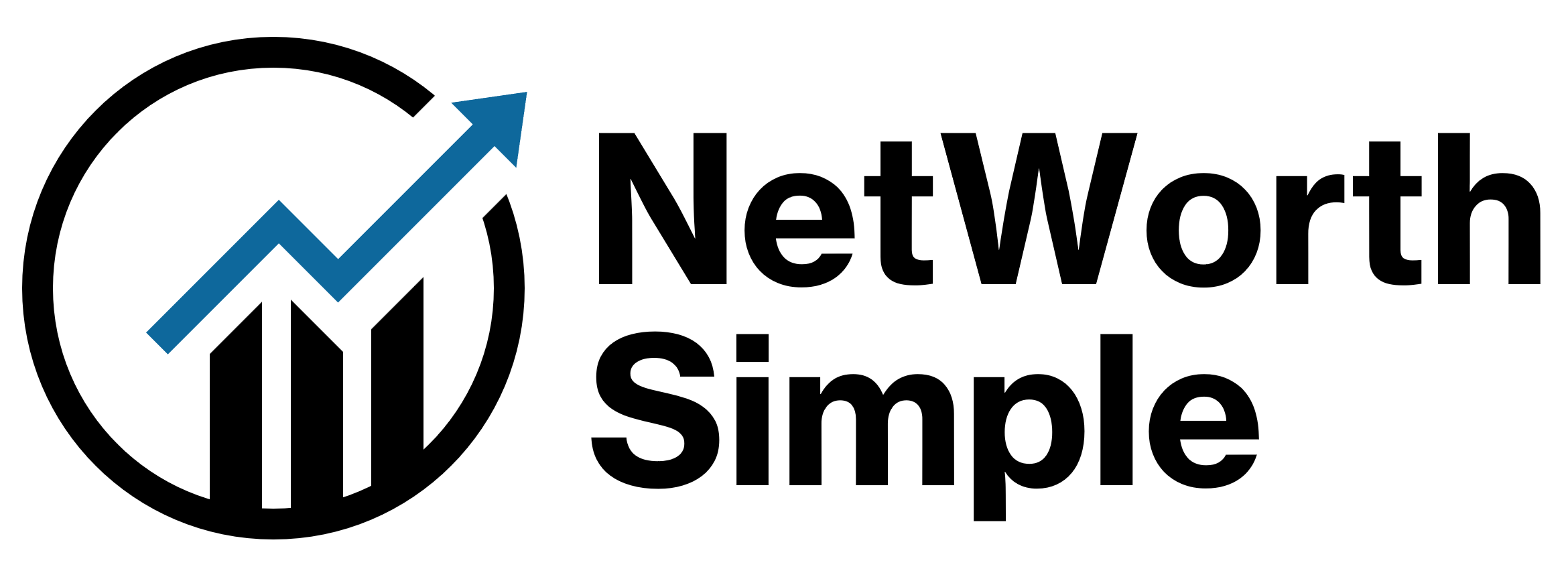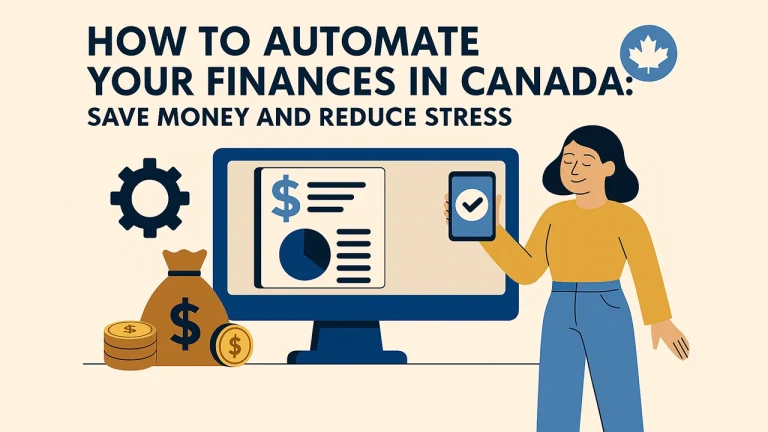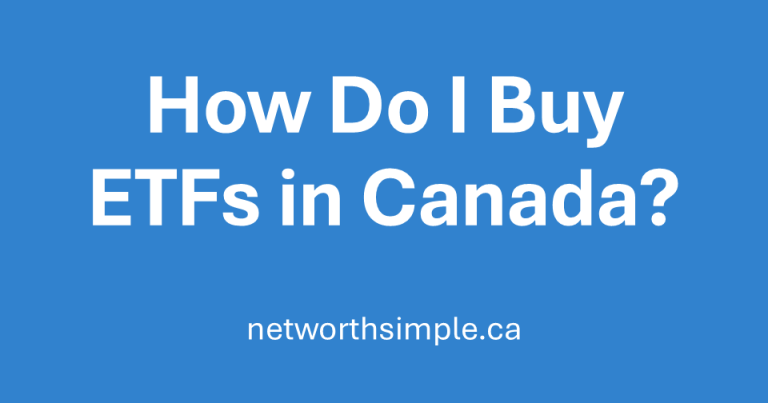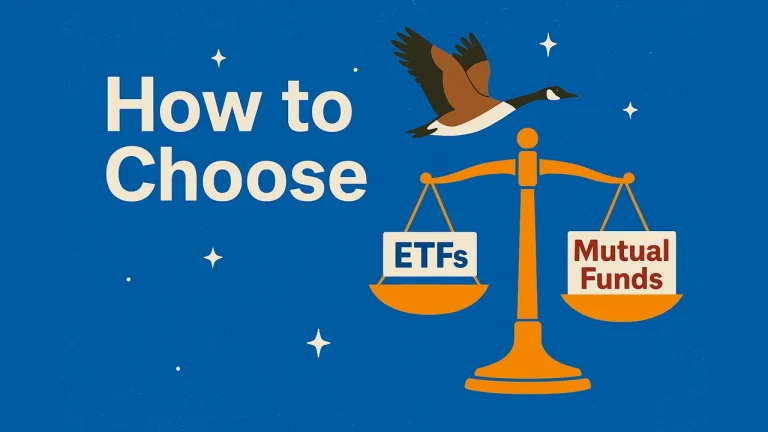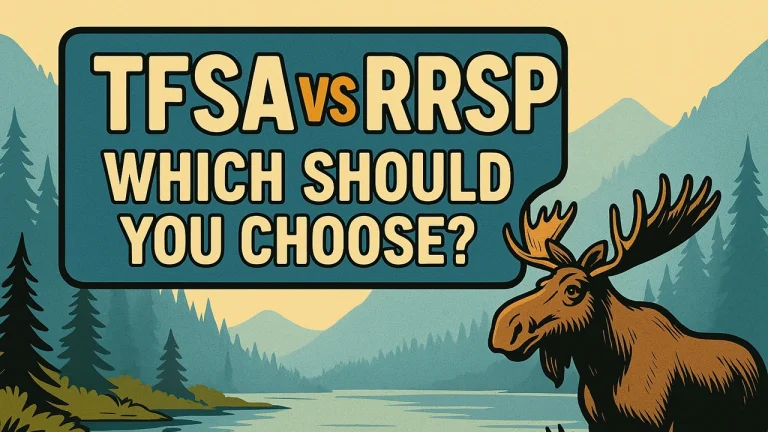TFSA 101: What Canadian Professionals Need to Know About Tax-Free Savings Accounts (2025)
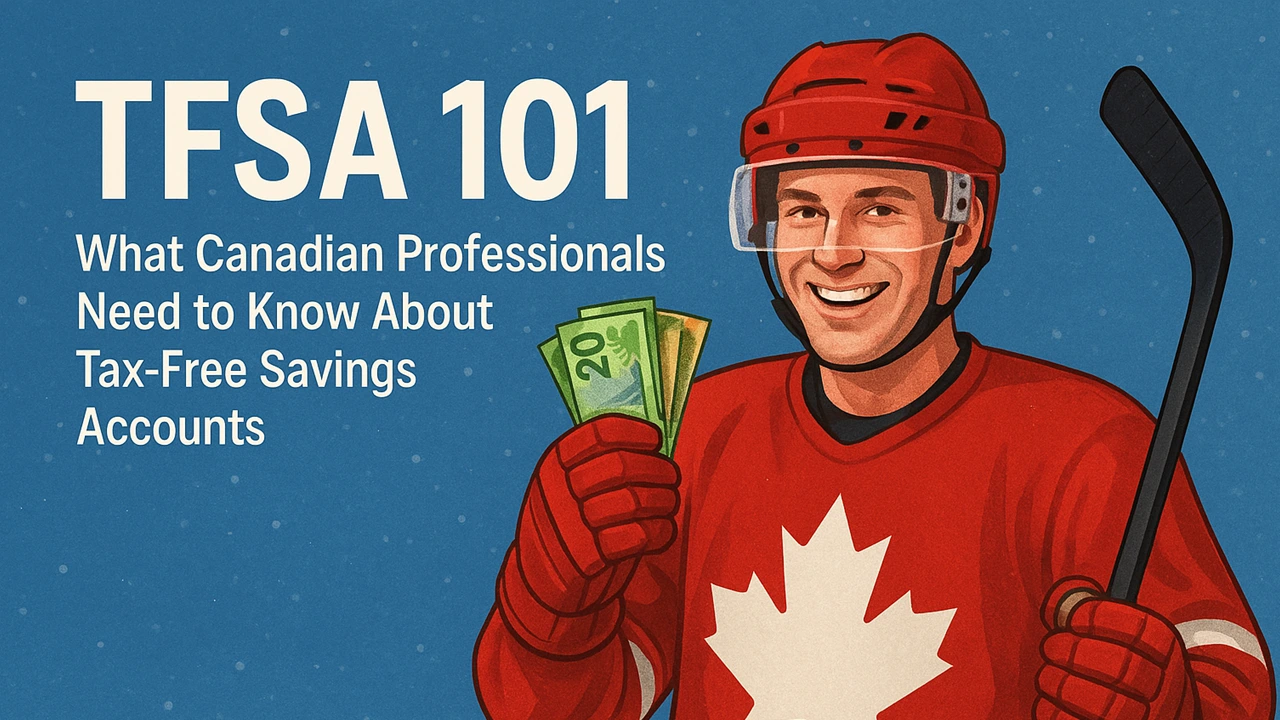
Looking for a smarter way to grow your money in Canada — without paying a dime in taxes on your gains?
The Tax-Free Savings Account (TFSA) is one of the most powerful, flexible, and underused investment tools available to Canadian professionals.
Whether you’re saving for a home, a rainy day, or early retirement, a well-managed TFSA can help you reach your goals faster and with zero tax stress.
Keep reading to learn how the TFSA works in 2025, how much you can contribute, and how to avoid common mistakes that cost Canadians thousands.
Quick Summary
- ✅ Contribution limit for 2025 is $7,000 — lifetime max is $95,000 if eligible since 2009
- 💸 Withdrawals are completely tax-free, including any gains from investments
- 📈 Use your TFSA for more than just savings — invest in ETFs, stocks, and more
- 🚫 Avoid penalties by not recontributing in the same calendar year
- 🔍 Always check your CRA MyAccount to know your exact contribution room
- 📊 Ideal for flexible, long-term wealth building — no income tax break now, but no taxes later either
What is a TFSA and How Does It Work?
The Tax-Free Savings Account (TFSA) is a versatile, government-registered account that allows Canadians to earn tax-free investment income. Despite its name, a TFSA is not limited to savings — it can serve as a powerful vehicle for both short-term financial goals and long-term wealth building.
💡 Pro Tip
Ready to take a deeper dive into investing fundamentals?
📖 Explore our comprehensive Beginner’s Guide to Investing in Canada — built specifically for Canadian professionals.
The Basics of a TFSA
Introduced in 2009, the TFSA allows individuals to contribute after-tax dollars, with the benefit that any growth within the account — including interest, dividends, and capital gains — is entirely tax-free. Withdrawals can be made at any time, for any purpose, with no taxes owed and no impact on government benefits.
Key characteristics:
- Contributions are not tax-deductible
- Withdrawals are tax-free, regardless of the amount or reason
- Contribution room replenishes the following calendar year after a withdrawal
This flexibility makes the TFSA an ideal option for Canadians seeking both accessibility and tax-efficient growth.
💡 Pro Tip
The best part about TFSAs: no taxes on money growing in the account, and no taxes on money you withdraw.
Who is Eligible to Open a TFSA?
To open a TFSA, you must meet the following criteria:
- Be a Canadian resident
- Be 18 years of age or older
- Possess a valid Social Insurance Number (SIN)
Note: In provinces where the age of majority is 19 (e.g., British Columbia, Newfoundland, Nova Scotia), financial institutions may delay account opening until that age — however, contribution room still begins accumulating at age 18.
What Can You Hold in a TFSA?
The TFSA allows for a broad range of qualified investments, similar to those available in a registered retirement savings plans (RRSP).
These include:
- Cash / High-interest savings deposits
- Exchange-Traded Funds (ETFs)
- Publicly traded stocks (Canadian and U.S.)
- Government and corporate bonds
- Mutual funds
- Guaranteed Investment Certificates (GICs)
- Publicly traded stocks (Canadian and U.S.)

Your investment choices within a TFSA should reflect your time horizon, risk tolerance, and financial goals. For short-term needs, capital preservation may be a priority, while for longer-term objectives, growth-oriented investments such as ETFs or equities may be more appropriate.
2025 TFSA Contribution Limits and Rules
Understanding TFSA contribution rules is essential to avoid penalties and to make the most of this powerful savings tool. In 2025, Canadians benefit from a modest increase to the annual contribution limit — but proper tracking remains your responsibility.
Annual Contribution Limit
For 2025, the TFSA contribution limit is $7,000. This amount is indexed to inflation and rounded to the nearest $500. If you’ve been eligible since the program began in 2009 and have never contributed, your total cumulative contribution room is $95,000 as of 2025.
To find the latest contribution limits, check the federal government’s website on TFSA contribution limits.
TFSA contribution rooms from 2009 to 2026 are listed in the table below:
|
Years |
Annual TFSA Dollar Limit (CAD) |
|---|---|
|
2009 to 2012 |
$5,000 |
|
2013 and 2014 |
$5,500 |
|
2015 |
$10,000 |
|
2016 to 2018 |
$5,500 |
|
2019 to 2022 |
$6,000 |
|
2023 |
$6,500 |
|
2024 to 2026 |
$7,000 |
💡 Pro Tip
You can verify your available TFSA room through your CRA MyAccount.
Unused Room and Withdrawals
- Unused contribution room carries forward indefinitely — so if you don’t contribute in a given year, the room isn’t lost.
- Withdrawals made in a given year are added back to your contribution room the following calendar year.
It’s important not to recontribute withdrawn amounts in the same year unless you have sufficient room — doing so may trigger an overcontribution penalty.
Overcontributions and Penalties
The Canada Revenue Agency (CRA) imposes a 1% monthly tax on excess contributions. For example, a $1,000 overcontribution left uncorrected for three months would result in a $30 penalty.
To avoid this:
- Track contributions across all TFSA accounts
- Check CRA MyAccount for the most up-to-date information
- Be cautious with transfers and withdrawals if you manage multiple accounts
How Do You Open a TFSA?
Understanding where you open your TFSA can impact your fees, investment options, and overall strategy. Here are the main categories — with examples to help you decide which suits your needs.
Types of Institutions Where You Can Open a TFSA
🏦 Banks and Credit Unions
Best for: Conservative savers, short-term goals, and basic TFSA deposits
Key features:
- Offer TFSA savings accounts and GICs
- Limited investment options (usually no stocks or ETFs)
- Easy to open online or in-person
Examples: RBC, TD Canada Trust, Scotiabank, CIBC, BMO, Desjardins, Vancity
🤖 Robo-Advisors
Best for: Busy professionals seeking hands-off, low-cost investing
Key features:
- Automatically invest your TFSA in diversified ETF portfolios
- Offer features like automatic rebalancing and goal tracking
- Great balance of simplicity, diversification, and growth potential
Examples: Wealthsimple, Questrade Questwealth, CI Direct Investing, Justwealth
💻 Online Brokerages
Best for: Self-directed investors who want control and low fees
Key features:
- Buy and sell ETFs, stocks, bonds, and more within your TFSA
- Ideal for DIY investors with a long-term mindset
- Requires more time and understanding of markets
Examples: Questrade, Wealthsimple Trade, TD Direct Investing, RBC Direct Investing
📈 Full-Service Investment Firms or Financial Advisors
Best for: Canadians who want personalized advice and are comfortable with higher fees
Key features:
- Access to actively managed portfolios, mutual funds, and financial planning
- Higher account minimums and fees
- Typically more tailored, but less cost-efficient for long-term passive investors
Examples: Edward Jones, IG Wealth Management, Manulife Securities, Raymond James
💡 Pro Tip
Most Canadians use a bank TFSA for savings, but professionals with long-term goals often benefit more from a self-directed TFSA through an online brokerage like Questrade.
What You’ll Need to Open an Account
To open a TFSA, you’ll need to provide:
- A valid SIN (Social Insurance Number)
- Government-issued ID
- Proof of address (utility bill, lease, etc., if required by the institution)
Many financial institutions now allow you to open a TFSA entirely online in under 20 minutes.
Self-Directed vs. Full-Service TFSAs
The type of TFSA you open will influence how much control and flexibility you have.
|
Account Type |
Description |
Pros |
Cons |
|---|---|---|---|
|
Full-Service TFSA |
Offered by banks and investment firms; advisors manage the investments |
Hands-off, suitable for beginners |
Higher fees, limited investment choices |
|
Self-Directed TFSA |
Opened through online brokerages; you choose and manage investments |
Full control, low fees, broader asset access (e.g., ETFs, stocks) |
Requires time, investment knowledge, and active management |
Which to choose?
- If you prefer simplicity and guidance, a full-service TFSA may suit your needs.
- If you’re comfortable managing investments and want to minimize costs, a self-directed TFSA offers more control and flexibility — especially valuable for long-term investing.
Common TFSA Mistakes and How to Avoid Them
Even experienced professionals can make costly errors with their TFSA. Here’s how to stay on track and fully benefit from tax-free growth.
Mistake 1: Overcontributing to Your TFSA
Many Canadians accidentally exceed their TFSA limit — often by recontributing too soon after a withdrawal.
Avoid it by:
- Checking your CRA MyAccount for exact contribution room
- Waiting until January 1st of the next calendar year before recontributing withdrawn amounts
- Keeping personal records of all contributions and withdrawals
💡 Pro Tip
⚠️ Be careful: the CRA charges a 1% monthly penalty on the overcontributed amount until it’s withdrawn.
Mistake 2: Treating Your TFSA Like a Basic Savings Account
Parking cash in a TFSA may be safe, but it limits growth — especially in a high-inflation environment.
What to do instead:
- Consider a robo-advisor or self-directed platform to access higher-return assets
- Use your TFSA to hold ETFs, stocks, or diversified portfolios aligned with your goals
- Match investments to your time horizon and risk tolerance
Mistake 3: Forgetting That Contribution Room Is Shared Across All Accounts
If you have multiple TFSAs (e.g., at different banks), the contribution limit is combined, not separate.
Best practices:
- Consolidate accounts if possible for easier tracking
- Keep a detailed personal spreadsheet or use your financial institution’s tools
- Don’t rely on the bank to monitor your total room — they aren’t responsible for penalties
Mistake 4: Misunderstanding Withdrawal Rules
Withdrawals are tax-free — but recontributing in the same year can trigger an overcontribution.
Avoid it by:
- Withdrawing only when needed
- Planning larger withdrawals for late in the year if you intend to recontribute soon
- Waiting until the following January to put funds back in
Best Investment Options to Hold in Your TFSA (2025)
Your TFSA is more than just a savings vehicle — it’s a powerful tool for tax-free investing. Choosing the right assets can significantly impact your long-term returns, especially since none of the growth is taxed. Here’s how Canadian professionals can make the most of their TFSA in 2025.
Why Investment Choice Matters
The TFSA shields your investment gains from taxes — so the more your investments grow, the more valuable the tax shelter becomes. That’s why holding low-yield assets like basic savings may not fully capitalize on its potential.
💡 Pro Tip
Generally, the higher the growth potential (and associated risk), the greater the benefit of holding it in a TFSA.
Top Investment Options to Consider in 2025
1. Exchange-Traded Funds (ETFs)
Why they’re ideal:
ETFs offer low-cost diversification and broad market exposure — making them one of the best long-term investment choices for TFSAs.
- Low fees (often <0.25%)
- Exposure to global equities, bonds, or sectors
- Suitable for both passive and DIY investors
ETFs are especially beneficial in self-directed TFSAs, or through robo-advisors offering ETF portfolios.
2. Individual Stocks
Why they’re useful (with caution):
For experienced investors, high-quality dividend or growth stocks can thrive in a TFSA — with the added benefit of tax-free capital gains and dividends.
- No capital gains tax on appreciation
- All dividends are received tax-free
- Higher risk, so best for those with investing experience and time to monitor performance
💡 Pro Tip
Frequent trading or “day trading” in a TFSA can raise red flags with the CRA and potentially trigger taxes as business income.
3. High-Interest Savings or GICs
Best for short-term goals:
If you’re using your TFSA as an emergency fund or saving for a large expense in the next 1–2 years, safety and liquidity take priority.
- Capital is guaranteed
- Ideal for short time horizons
- Easily accessible at banks or online savings accounts
Just be aware that these low-yield options won’t compound tax-free returns nearly as effectively over the long term.
4. Robo-Advisor Portfolios
Best for busy professionals who want a hands-off approach:
Robo-advisors invest your TFSA in a diversified ETF portfolio tailored to your goals and risk profile — with automatic rebalancing and no effort on your part.
- Professional management
- Automatically diversified
- Modest fees (~0.25–0.80%)
Great for those who want the benefit of investing without needing to manage it directly.
What to Avoid in a TFSA
U.S. dividend stocks: While gains are tax-free, U.S. dividends are subject to a 15% withholding tax that cannot be recovered in a TFSA.
High-fee mutual funds: Fees can quickly erode returns, especially over long time horizons.
Idle cash: Uninvested cash in your TFSA misses out on the real benefit — tax-free compounding.
💡 Pro Tip
Hold dividend-paying US stocks or ETFs in RRSPs rather than TFSAs to avoid the 15% withholding tax.
Conclusion
The TFSA remains one of the most valuable and flexible tools for building wealth in Canada — but unlocking its full potential requires more than just opening an account. Here’s a quick recap of what you need to know in 2025:
- ✅ Annual TFSA contribution limit in 2025 is $7,000, with a lifetime maximum of $95,000 if you’ve been eligible since 2009
- 💸 All investment growth and withdrawals are completely tax-free, regardless of how much you earn
- 📊 Choose investments that align with your goals — ETFs, stocks, and robo-advisors offer better long-term growth than cash or GICs
- 🧾 Always check your CRA MyAccount to stay within your contribution limits and avoid penalties
- 🔄 Be cautious with recontributing withdrawn funds — room is restored the following calendar year, not immediately
- 🛠️ Consider a self-directed TFSA for lower fees and greater control, or a robo-advisor for simplicity and diversification
Whether you’re just getting started or looking to optimize your current strategy, using your TFSA intentionally can help you reach your financial goals faster — with zero tax drag along the way.
